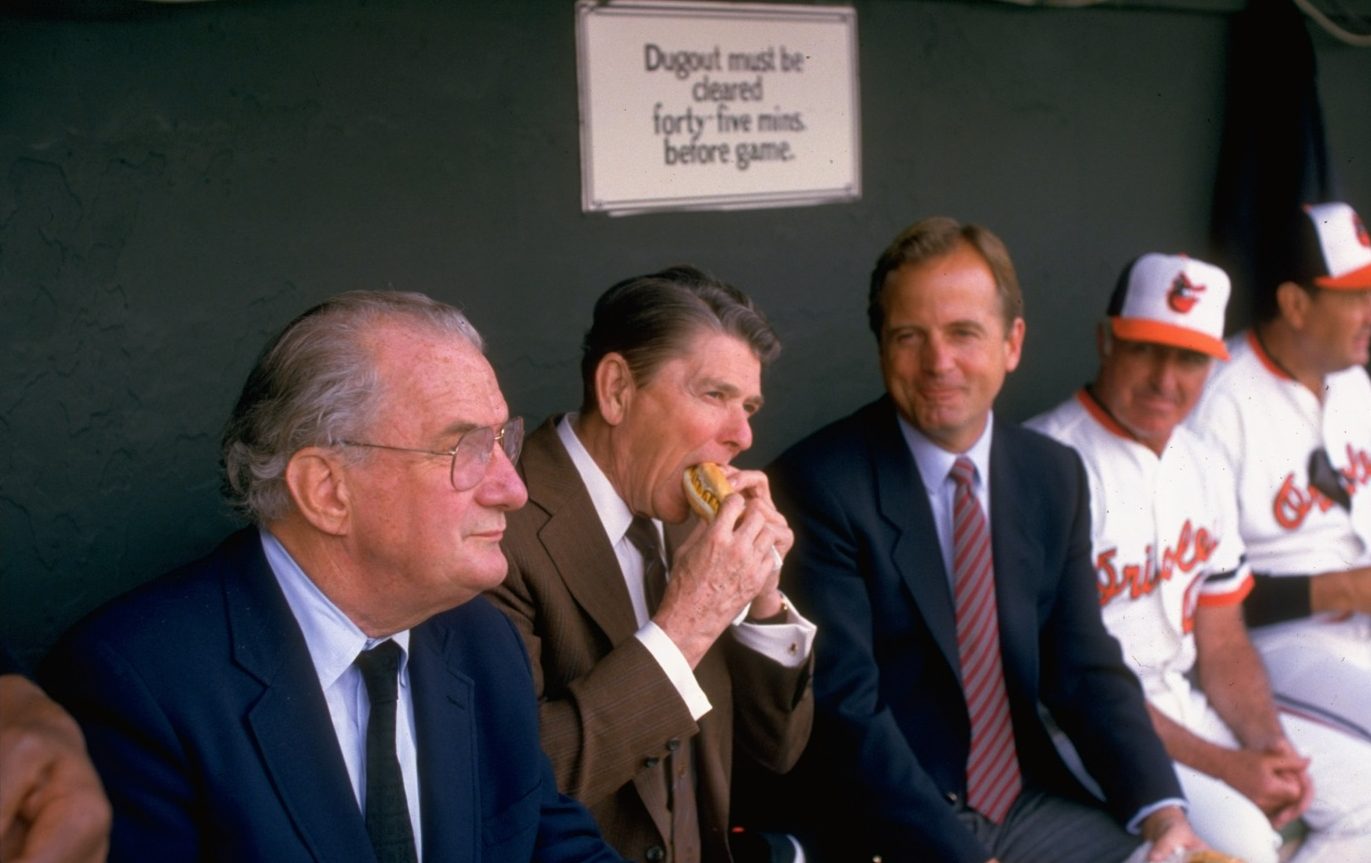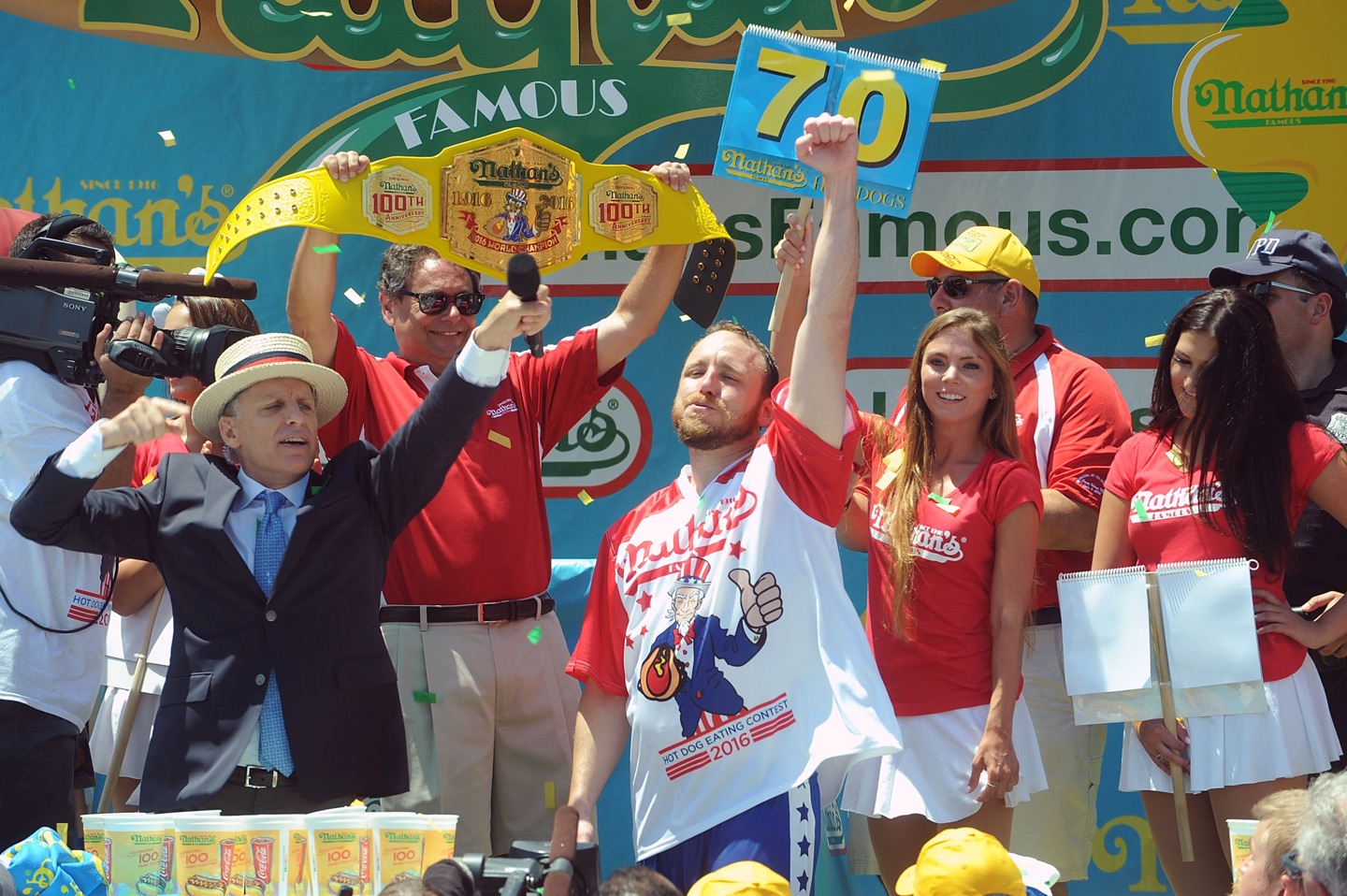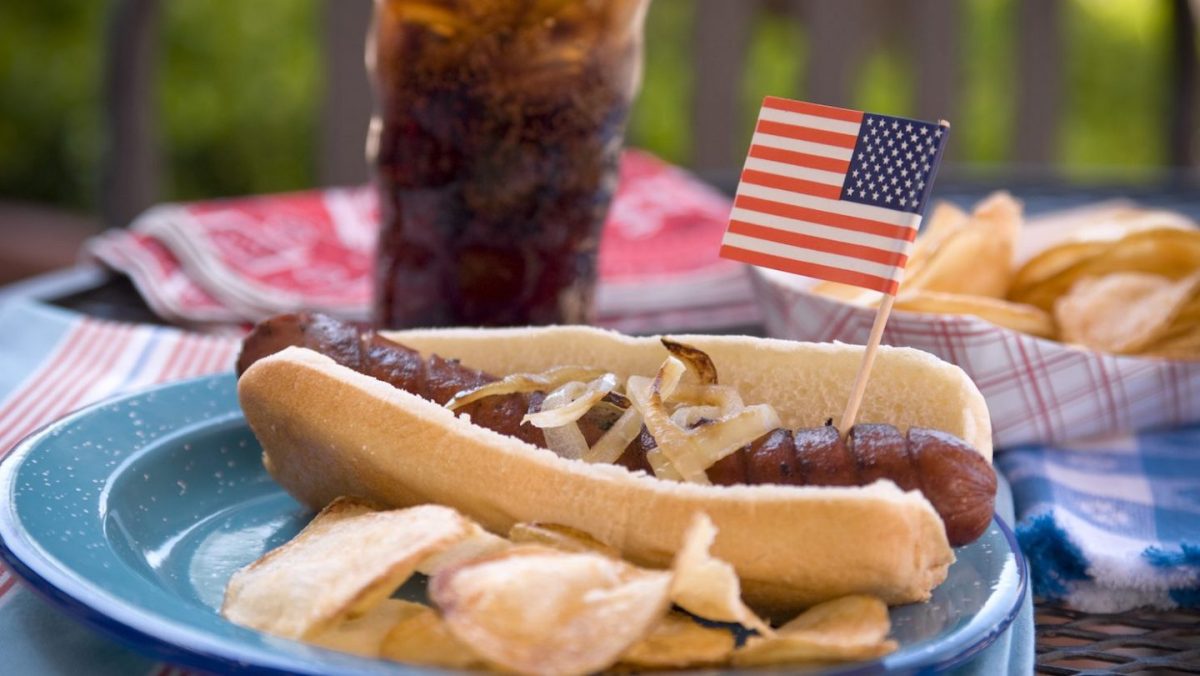In some ways, we celebrate the Fourth of July very much like the Founding Fathers did. (Indeed, American University’s James R. Heintze located a Virginia Gazette account of a 1777 celebration of the signing of the Declaration of Independence, already featuring an elaborate fireworks display.)
Yet in other ways, Independence Day celebrations have slowly evolved over many, many years. For one, the date didn’t become a federal holiday until 1870.
More surprisingly, though, it took about 200 years before the Fourth fully embraced the hot dog.
The origins of the hot dog are debated, well, hotly. Sausage, of course, has been with humans for thousands of years, even earning a mention in Homer’s Odyssey.
But who brought the bun into the picture?
Sausage achieved particular popularity in Germany and Austria, with the result both Vienna and Frankfurt claim to be the place of the hot dog’s birth about 500 years ago—Frankfurt seems to have won the PR battle thanks to the popularity of the term frankfurter. (An alternative theory, however, holds another German city is the place of origin and Johann Georghehner invented the hot dog in Coburg.)
There is also uncertainty about the emergence of the hot dog in the U.S. The first known American usage of “hot dog” came in 1892 in New Jersey’s Paterson Daily Press: “The ‘hot dog’ was quickly inserted in a gash in a roll, a dash of mustard also splashed on to the ‘dog’ with a piece of flat whittled stick, and the order was fulfilled.”
A breakthrough came a year later, when Samuel Ladany and Emil Reichel introduced the first Vienna Beef hot dog at the Chicago World’s Fair. (Their company, Vienna Beef, remains in operation to this day.)
The rise of hot dogs was assisted by the growth of another staple of Americana: baseball. Again, it’s debated who first sold hot dogs at the ballgame, with candidates including Harry M. Stevens and Chris von der Ahe. The latter, in particular, is an intriguing figure. Ahe owned the St. Louis Browns baseball team (now the Baltimore Orioles) and sold hot dogs at his ballpark. In recent years, he has received strong consideration for induction to the Baseball Hall of Fame.

As much as baseball is the American Pastime, it still doesn’t explain how the food came to become so associated with the Fourth of July.
As noted, Independence Day was an occasion for massive celebrations since 1777. Partying can make a person hungry. What better way to feed them than a barbecue? Soon political parties recognized this was a chance to generate a little public goodwill. In particular, the Democratic-Republican Party (founded by Thomas Jefferson) liked to roast a pig and watch the potential voters gather.
While that political party split in 1825—one portion became the modern Democrats—the barbecues were never extinguished.
As hot dogs grew in popularity, it seemed only natural to add them to all the meats being served to celebrate our nation’s independence.
Of course, hot dogs are now uniquely linked with the Fourth of July through an annual display of gluttony. In 1916, Nathan Handwerker set up a business that came to be known as Nathan’s Famous. Legend has it he also held a hot dog eating contest. The first champion, James Mullen, reportedly consumed 13 in 12 minutes.
In 1972, Nathan’s began having a hot dog eating contest every Fourth of July. That year’s champ won with just 14, suggesting very small advances had been made in the field of hot dog eating since 1916. In recent years, however, the statistics have reached astounding levels. Kobiyashi and then current champ Joey Chestnut continually upped the ante—a title-holder today better be prepared to devour 70. (Indeed, Sonya “The Black Widow” Thomas has been known to consume 45 while weighing just 105 pounds.)
Inspired by these competitors, America’s love of hot dogs seems to deepen each year, as in 2016 our nation devoured approximately 150 million hot dogs over the Fourth of July weekend.

This article was featured in the InsideHook newsletter. Sign up now.
























